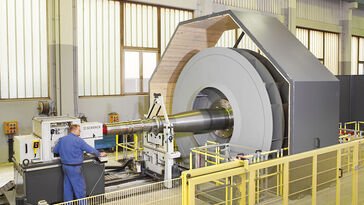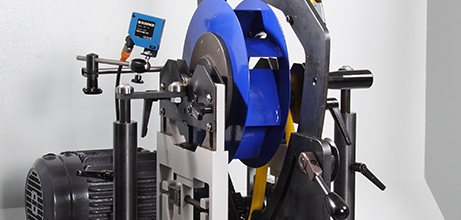How To Avoid Major Causes of Unbalanced Parts
 Unbalanced components can lead to electrical motor failures that necessitate costly investigation, repairs, or replacement. The easiest way to avoid this is to properly balance the rotor during the manufacturing stage.
Unbalanced components can lead to electrical motor failures that necessitate costly investigation, repairs, or replacement. The easiest way to avoid this is to properly balance the rotor during the manufacturing stage.
Unbalance happens when a rotating component’s center of mass, or inertia axis, becomes unaligned with its center of rotation, or geometric axis. It causes the rotating component to exert dynamic load on its supports, shaft, and connected structures. Here, we will discuss some common causes of unbalance and how to correct them as well as why it’s important to have balanced parts.
What Causes the Unbalance of Parts to Occur?
In general, all cases of unbalance result from the uneven distribution of mass around a rotation axis. However, this unevenness can be caused by various factors, including the buildup of contaminants, assembly errors, dimensional and mass deviation in the parts, deformation of the parts, and normal wear of moving parts. Other factors that might contribute to unbalance include some unintended change caused by maintenance repairs, replacing a part, or incorrect placement of a part.
Since unbalance is a leading cause of premature failure in a rotating machine, it’s important to take the necessary steps to correct or prevent it.
How Do We Correct Unbalanced Parts?
To avoid further damage, balance correction must be carefully planned and performed. Two ways to correct unbalanced parts include material removal and material addition. Which method we use depends on the cause of the unbalance and the design of the parts.
Material Removal
The material removal method relies on abrasion, milling, or drilling processes. With the abrasion process, air-powered sanding or manual grinding tools are used to remove material; however, milling and drilling offer enhanced control. Material removal tooling must be able to remove the right amount of material from the correct place and to the proper depth without damaging nearby parts. At Test Devices, we use specially designed and calibrated milling equipment to remove material while maintaining high levels of precision and a superior finish.
Material Addition
Material addition methods solve unbalance by adding various correction features on the rotor, such as blades, inserts, washers, or screws. In some cases, we may weld material to the rotor or add epoxy coatings.
Why Is It So Crucial to Have Balanced Parts?

When left undetected, unbalanced rotors can lead to high maintenance and repair costs. In an extreme scenario, an unbalanced part from your facility could end up in a live field environment, where part failure can have disastrous consequences.
Balancing Services from Test Devices
Avoiding and correcting unbalance is crucial in preventing premature part failure in electrical motors. At Test Devices, we have provided high-quality balancing services for over 40 years. We are AS9100/ISO9001 certified, and our balancing services support a wide range of industry standards. To learn more about our balancing capabilities, contact us today.


